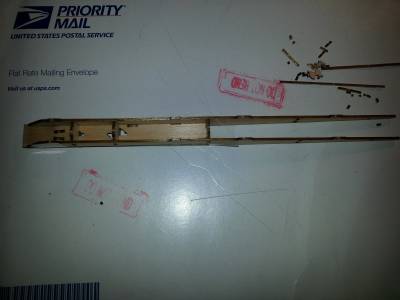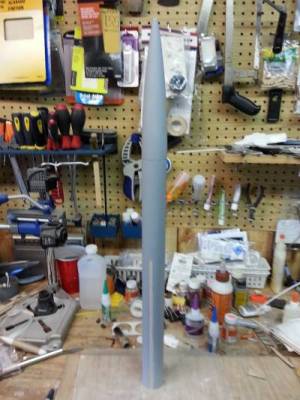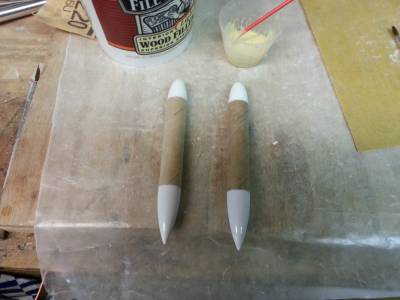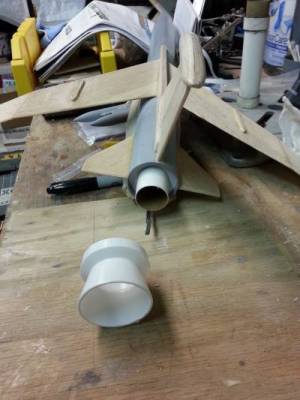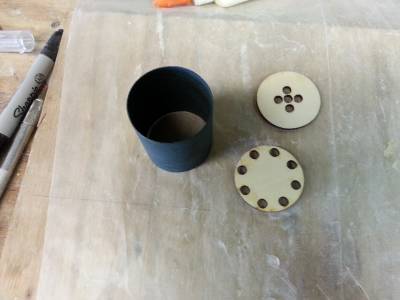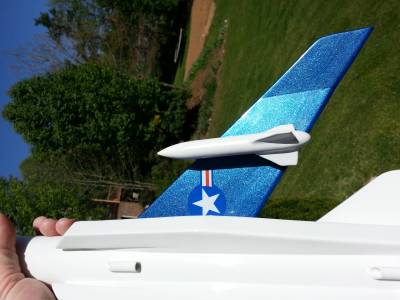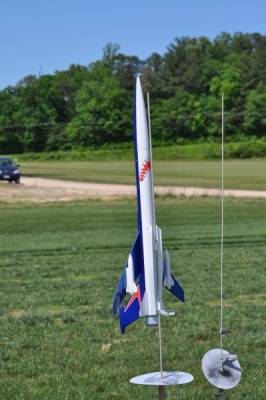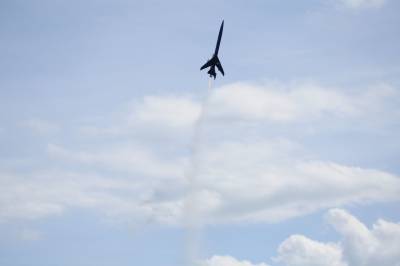Conquest
By Jim Hodge
2014-04-03
| Manufacturer: | Estes  | |
| Diameter: | 1.6400 inches | |
| Length: | 28.6000 inches | |
| Skill Level: | 5 | |
| Style: | Futuristic/Exotic |
The Conquest is the new skill level 5 kit from Estes. It is a BT-60 sized winged rocket that stands 28.6" tall with a wingspan of 12.8". It's suggested engines are the D12-3, E9-4 and the E12-4 with a projected max altitude of 1100 ft. We'll see about that. I love winged rockets and this looks to be an interesting build.
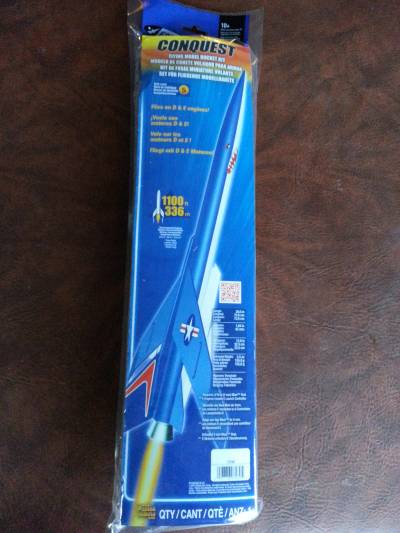
Kit contents.
2014-04-03
The Conquest kit includes the following items.
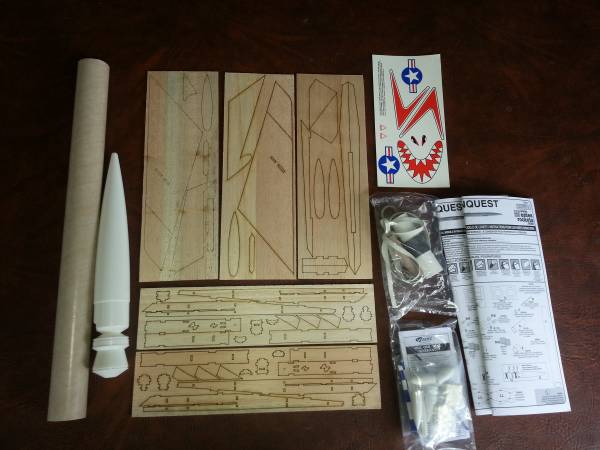
- 8" nosecone with aft skirt attached.
- 18" BT-60 body tube.
- 2 2.5" BT-5 body tubes.
- 4 plastic cones. Nose and aft for missiles.
- 3 3/32" wood sheets.
- 2 1/16" wood sheets.
- Decal sheet(waterslide).
- E engine mount with D adapter.
- Clay.
- Elastic shock cord.
- Plastic pre-assembled 18" parachute.
- Instructions.
Intake assembly.
2014-04-03
There are two intakes that need to be assembled from the 1/16" "wood" sheets. These are a bit fiddly and you will feel like you need one more hand to hold it together for gluing. The suggested glue is thin CA. Bad things happen with thin CA so don't even begin this step without some CA debonder around. Trust me on this.
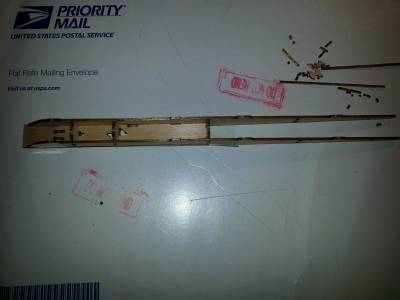


After assembly I sanded the sharp edges round and filled the gaps around joints with Hobbylite and then sealed the wood with four coats of Aero Gloss. I sanded the bottom of the intakes with sandpaper wrapped on the BT-60 tube until it was flush. The wood in my kit is very hard and multi colored. See above.
Engine Mount
2014-04-03
After you have recovered from gluing yourself to yourself it's time to assemble the E sized engine mount. It includes an engine hook, thrust ring, 24mm engine mount tube, BT-60 centering rings and an engine hook sleeve all glued together per the diagrams with wood glue. Easy enough.
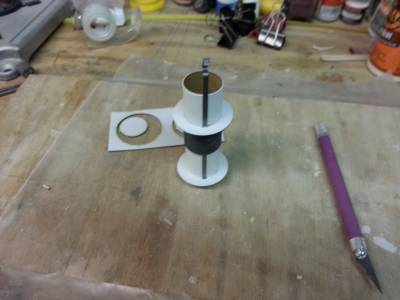
Tail cone and vertical stab.
2014-04-04
After gluing the two halves of the vertical stabilizer fin together I glued the four pieces of the tail cone to the top. Since this wood is so tough I roughed out the shape with my Dremel. Hand sanding this step would have been very time consuming. I was able to get the shape I wanted in about 45 minutes.
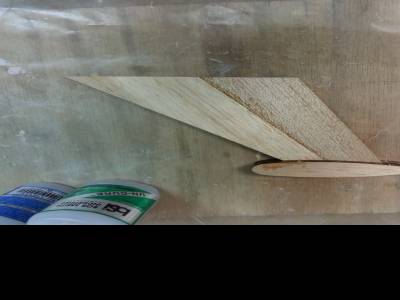

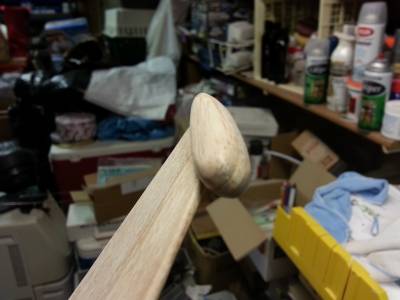
I hand sanded the tail cone and stabilizer and applied four coats of sealer.
Tail cone and vertical stab. Part 2
2014-04-05
There are three long wood pieces that are to be glued together. This unit will hold the vertical stabilizer and wing against the fuselage. I stacked them and sanded all the laser nastiness off of them before applying the CA. I rounded off the front as per the instructions but I also rounded the edges of the top for cosmetic reasons. Sanded sealed X4. Finally I attached the vertical fin/tail cone.
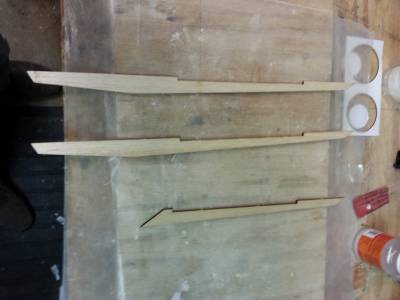

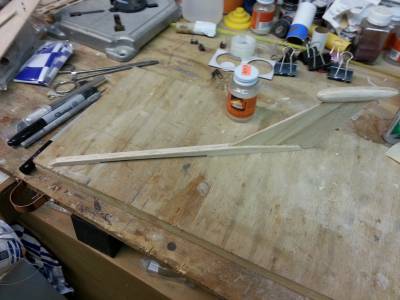
Wing assembly.
2014-04-07
There are four parts to the wing each beveled 5 degrees to the downside. I taped the wing parts together with a small strip of masking tape and adjusted the angle with the alignment guide provided. I applied CA into the joints and held it steady until it was fast.
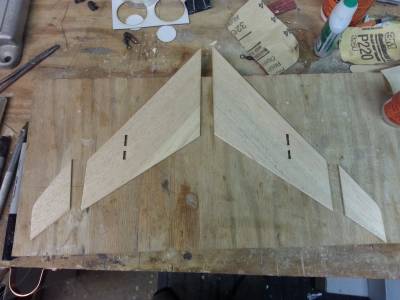
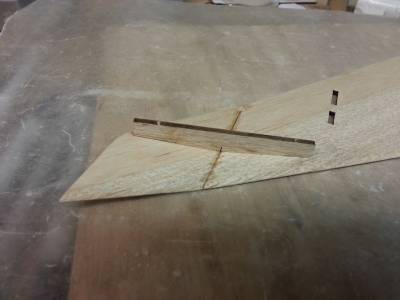
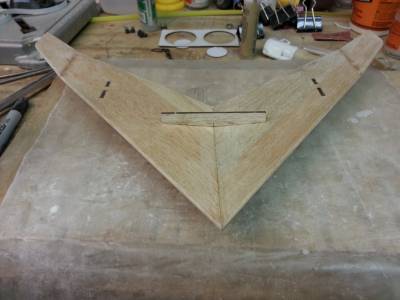
I rounded the leading edges and tapered the trailing edges. Sanded sealed X4.
Attach wings and fins.
2014-04-10
I jumped the gun a little here as I wanted to prime the BT-60 tube first and work out any defects before attaching the wing assembly, the rear fins and the intakes as it will become quite cluttered. I masked off the area where the wing assembly would attach so I could get a better bond between it and the body tube. I used BSI Insta Cure+ which is a gap filling medium thin CA that gave me about 15 seconds to get everything aligned with the provided "AA" tool. I then attached the vertical fin/tailcone assembly which is notched to help with proper placement.
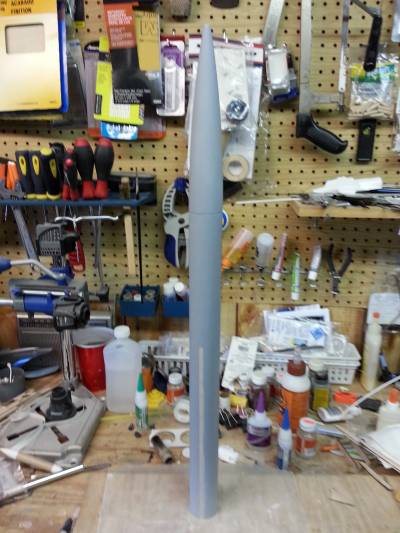
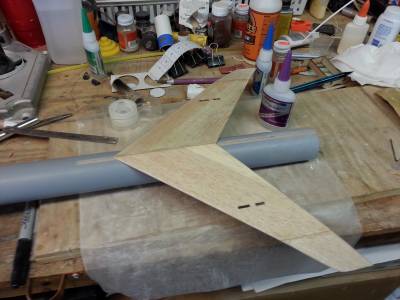
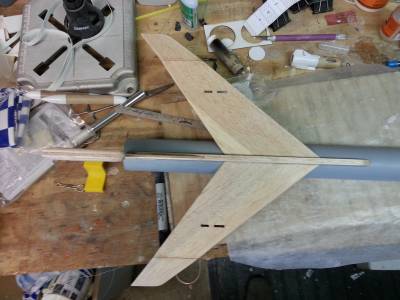
Once that was dry I sanded rounded the two small wood pieces that cover the missile pylon attachment holes on the top of the wing. I sealed and sanded them X4 after they were attached.
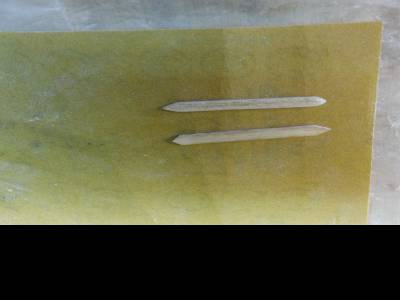
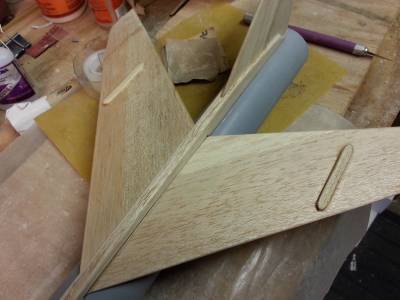
The rear fins were rounded on the leading edges and tapered on the trailing edge. I scraped the primer away to expose the body tube and the fins were attached with medium CA. I finished up with some wood glue fillets.

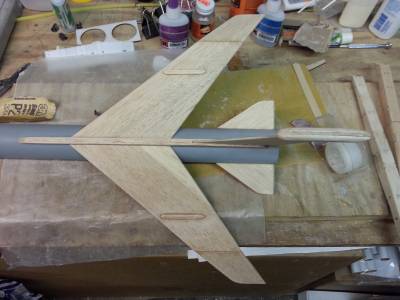
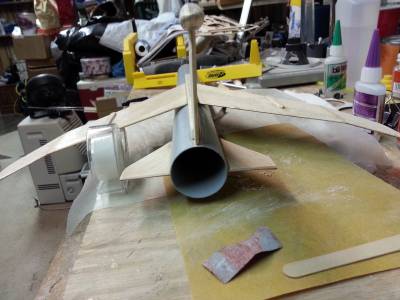
Sanded sealed X4.
Attach air intakes and launch lugs.
2014-04-11
The instructions declare that we switch to wood glue to attach the intake assemblies. I agree. On they went and positioning was stress free. I then CA'd the launch lugs on lickety split.
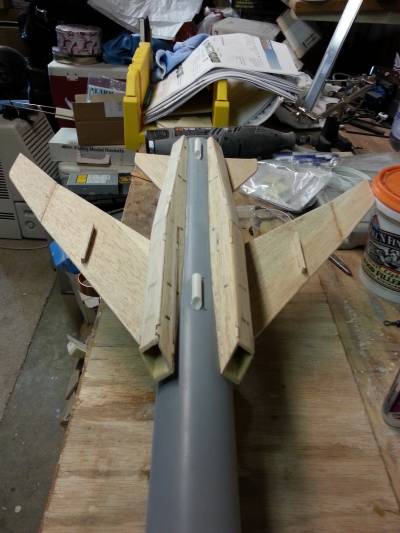
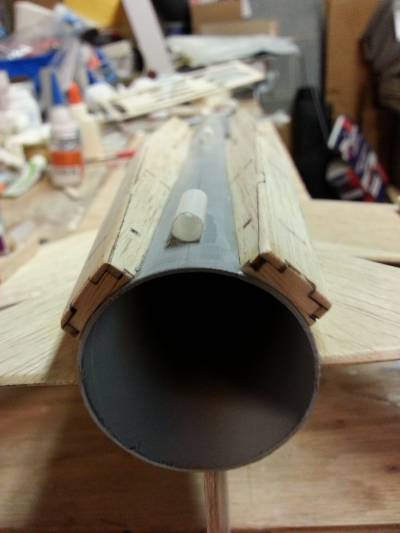
CORRECTION: After placing this on a rod I figured the stock launch lug setup would end up with some damage so I sliced off the 3/16 lugs and installed 1/4" lugs with a 1/8" standoff. It looks meaner now and hopefully I won't have rod rash.
Assemble Detail (Missiles)
2014-04-16
The two missiles are assembled like any micro 3F2NC. I used some watered down Fill N Finish to fill the spirals and then rounded all the fin edges and CA'd them to the body tube. I sanded and sealed X3. In retrospect I think I would have preferred to use wood glue here as the joints would have looked a little neater. Ok so now looking at the instructions I realize I have the tail and nose cones backwards. I like the way I did it better however. It looks stupid the other way.
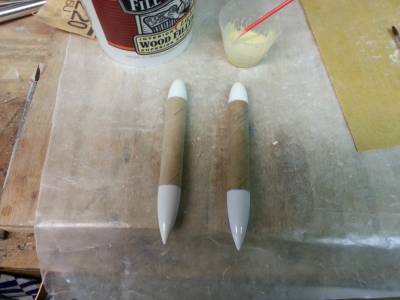
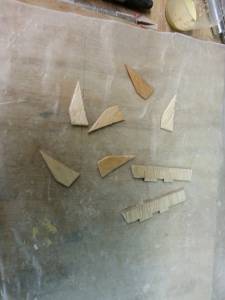

I am going to stray from the instructions here and NOT glue these to the wings yet. I want to get them primed and painted first as detailing them on the rocket would be difficult.
Install Engine Mount
2014-04-18
I decided to attach the engine mount sooner than later. I did NOT use CA here as that could have been "game changing" for this procedure. I epoxied the mount in and had enough time to adjust it and test fit the aft skirt against the rear centering ring without it all seizing on me. I won't attach the skirt until last however.
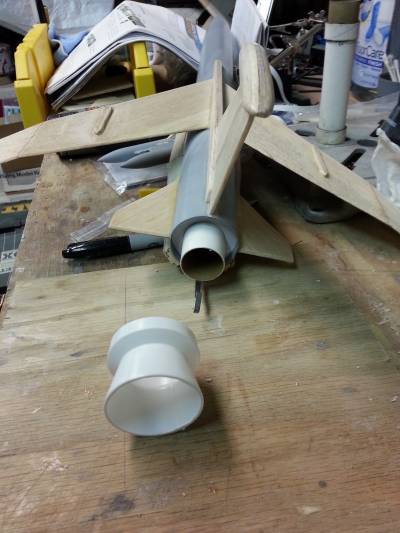
Baffle Assembly
2014-04-20
I'm not a big fan of the Estes shock cord mount although they do work perfectly well in most circumstances. I opted to install a BT-60 baffle(not included) which is constructed with a BT-60 coupler and two plywood centering rings with holes drilled in a pattern that will allow pressure to move through the fuselage at ejection without the need for wadding. I painted the blast surfaces with epoxy to protect the wood and installed a screw eye for the shock cord.
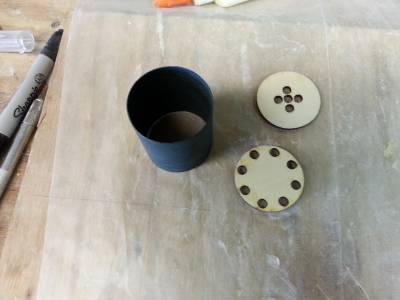
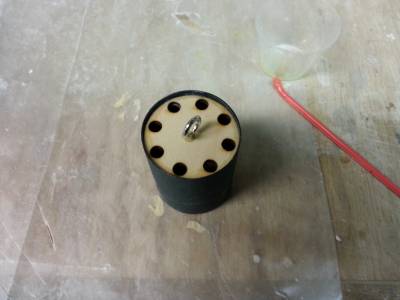
Ready to Prime!
2014-04-20
The Conquest is built except for the missiles and aft skirt which I will be finishing separately before final assembly. I've put some balsa into the missile pylon slots to protect the holes for gluing later.
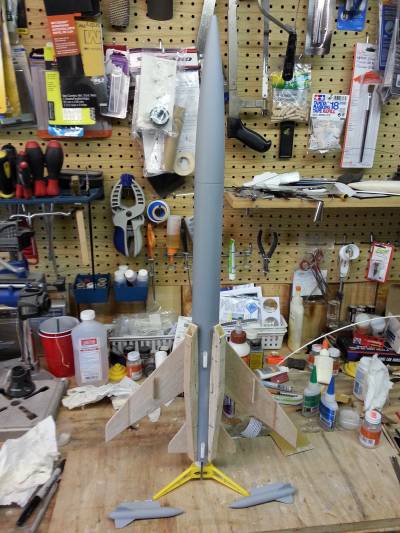
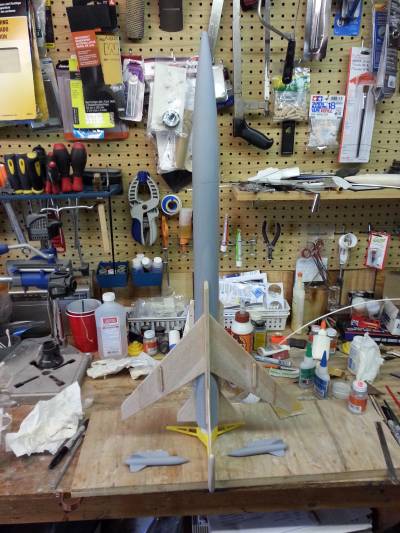
Ready For Color!
2014-04-23
Started with grey filler primer. Filled a lot of defects (minor ones on the air intakes mostly) with FNF between coats. I followed that up with a few coats of white sandable primer which should help the top coats pop. There are some very nice lines on this rocket and they are beginning to show.
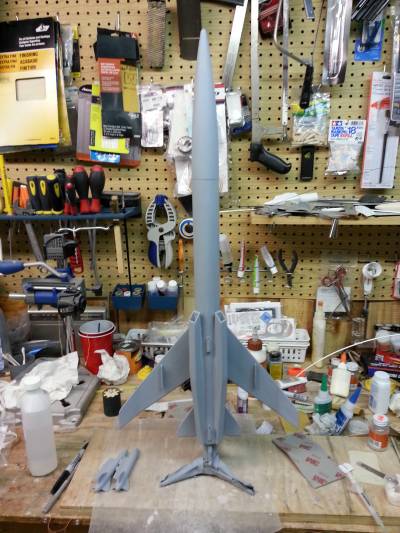
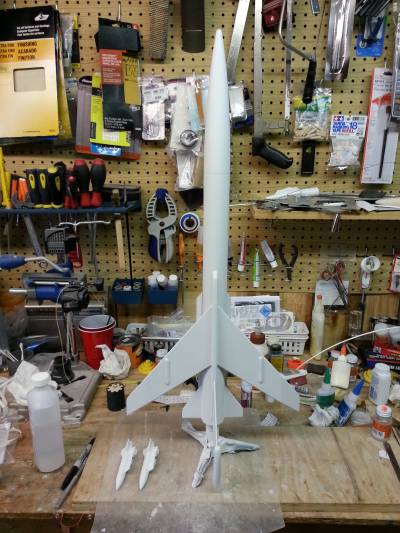
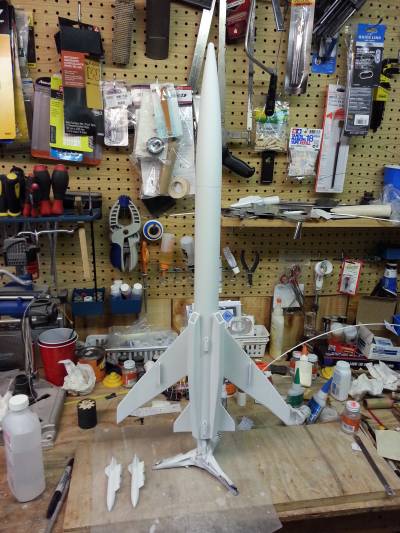
Finishing.
2014-04-24
If you look at the web photo of this rocket it appears that it is painted with a white/violet-blue paint job. Before I received this kit I went to my LHS to peruse paints and not seeing anything that matched was told that I should start mixing. Right! After getting my kit the facecard indicated more of a metallic blue and white finish. This was more in the realm of possibilities. I chose to do this in lacquer as it is fast drying and easier to polish than enamel. Rustoleum white lacquer and Duplicolor "Ocean Blue Metal Specks" fit the bill. Although the Duplicolor instructions would lead you to believe it is an enamel it is actually an acrylic lacquer. I have had a lot of experience with "Metal Specks" and it will take a lacquer clearcoat beautifully. I started with the white without any heavy masking involved. A plastic bag covered the wings while I coated the belly of the beast. Masking for the blue was much more involved. This paint scheme is apparently based on the Regulus II which has wings down the center line. The top is blue and the bottom white following the paint lines. I decided to paint both sides of the wing blue as they are above the center paint line on this rocket. The rear wings/fins are blue on top and white on the bottom. The facecard seems to indicate this scheme but to each their own I suppose. Tamiya tape here was a must. I did use the "blue tape" in non-critical areas. The blue covered quite evenly although much attention must be paid to the narrow spaces under the wings and all trailing edges. Wet sanding the white is fine while wet sanding the metallic blue is a no-no.
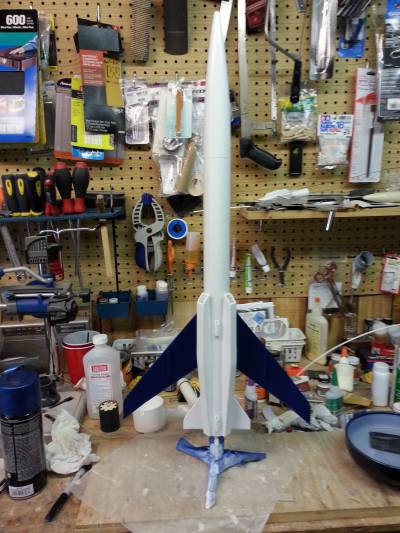
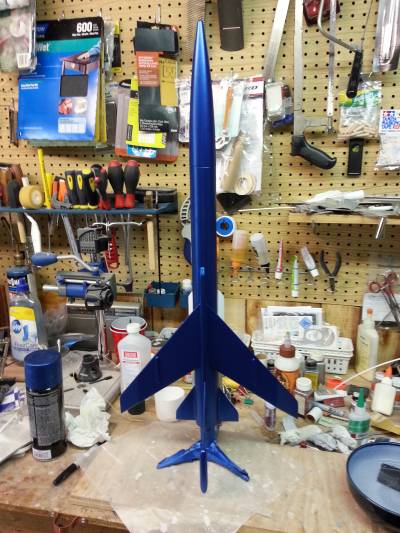
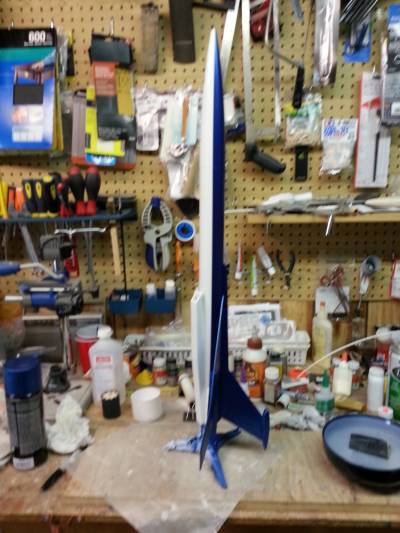
Decals
2014-04-25
The decals on this model are sparse and not very exciting apart from the teeth and beady eyes. If you follow the facecard dimensions the teeth would be placed over the seam between the nose cone and body tube. I placed mine behind the seam with a little wiggle room for repairs if needed in the future. Although there are two "stars and bars" decals for the wings two more would have been great for the sides of the fuselage. A couple of small decals for the missiles would have been worthy of skill level 5 kit. After placing the decals, I melted them on with Micro Sol for all time.
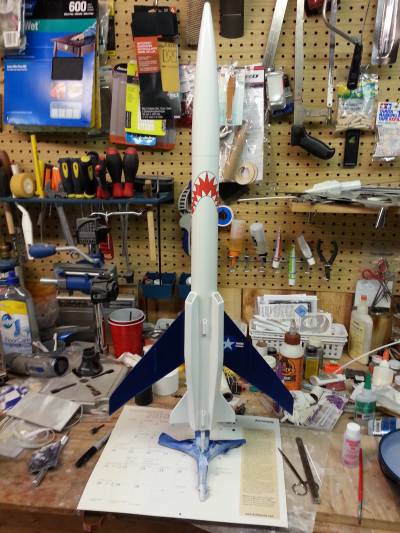
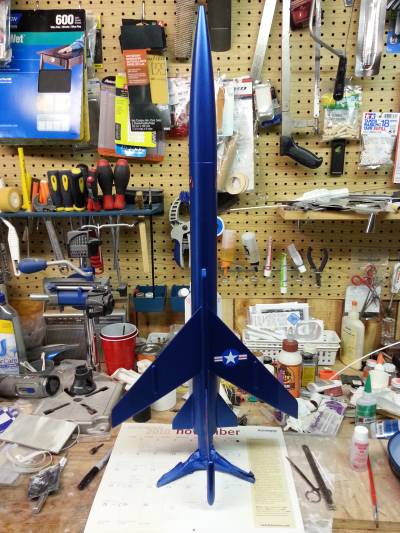
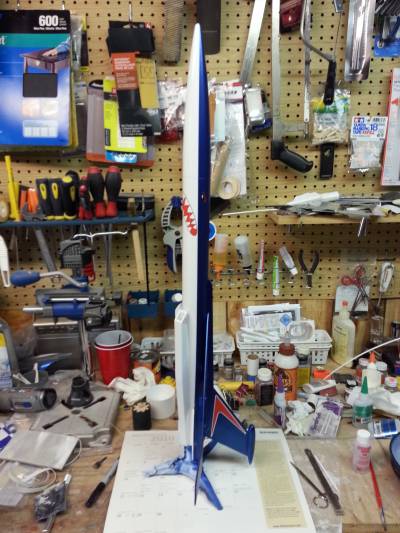
Clear Coat.
2014-05-04
I hit it with a few coats of clear lacquer and then wet sanded. A few more coats of clear were applied and wet sanded again. I then compounded, polished and applied a synthetic wax to the finish.
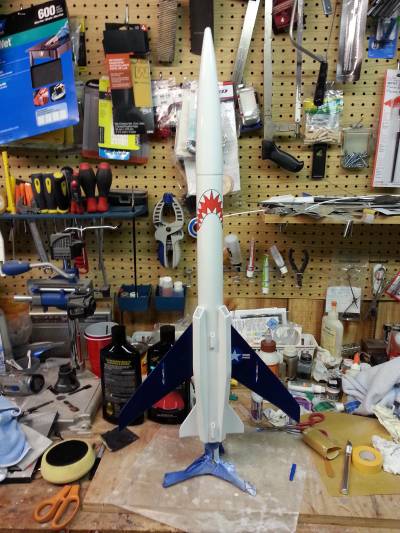
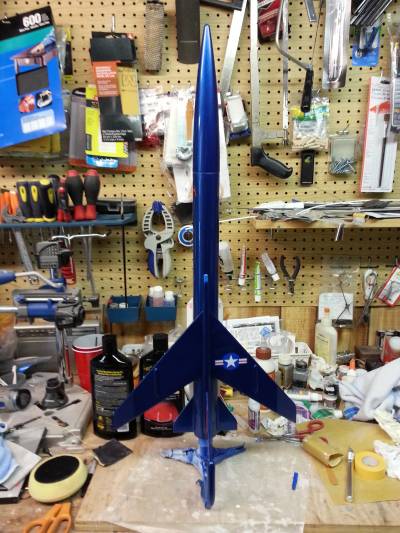
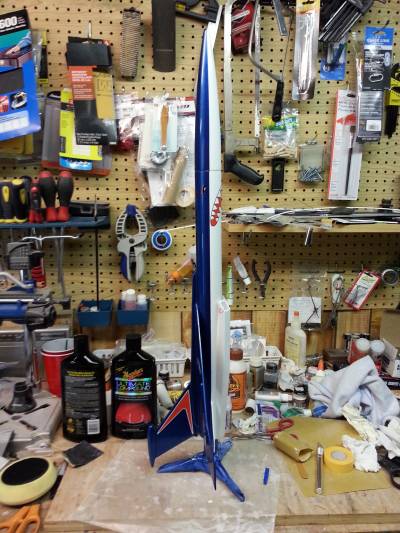
Missiles and Aft Skirt.
2014-05-04
The missiles and aft skirt were CA'd on as the final touches are underway. I clear coated the missiles with Krylon satin as glossy missiles seemed inappropriate. The aft skirt was painted with Rustoleum chrome.
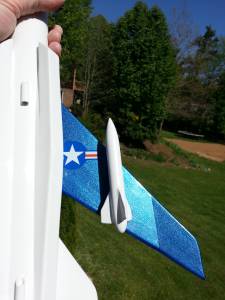
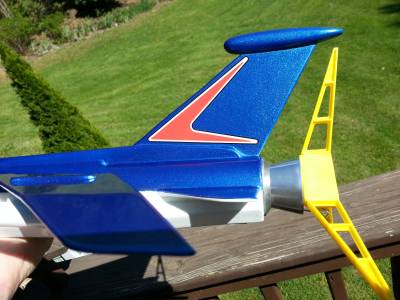
Final thoughts.
2014-06-06
This was a fun build I must admit even with all the snafus. It was much different than the normal fare and a bit of a challenge in spots. It looks great on display as well as on the pad so it's definitely a "buy" if you're looking for a challenge and something different.
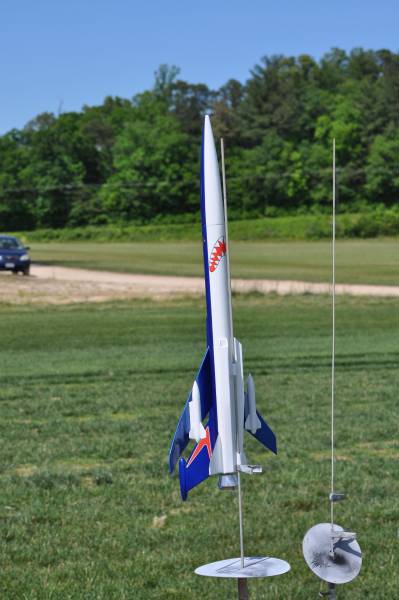
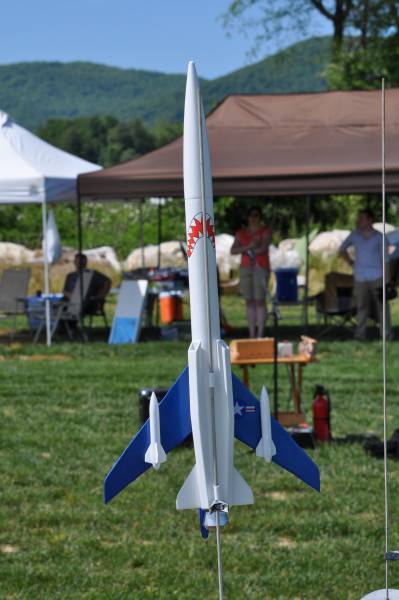
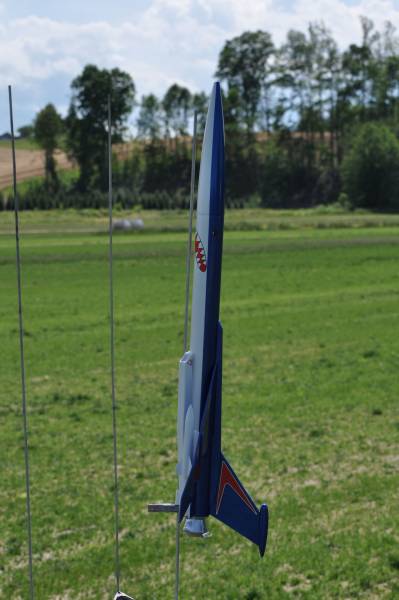
Launch
2014-06-06
The maiden flight was launched with an Estes D12-3 per the recommendations. I equipped the rocket with an altimeter to check the altitude. The specs state that this rocket will weigh 5.5 ounces. Mine came in at 10.6 minus the engine but it had a baffle and 6' of shock cord as well as a crazy paint job. I reached 245' on the D12-3 but I will work my way up to the E30-4 and see if I get to 1100' which is claimed on the face card. The E30-4 is a recommended engine in the instructions but not on the face card. It did arc a bit in flight turning over as if the tail cone and vertical stab was the disturbing factor. Estes E9-4 yielded 508' on 7/26/14.
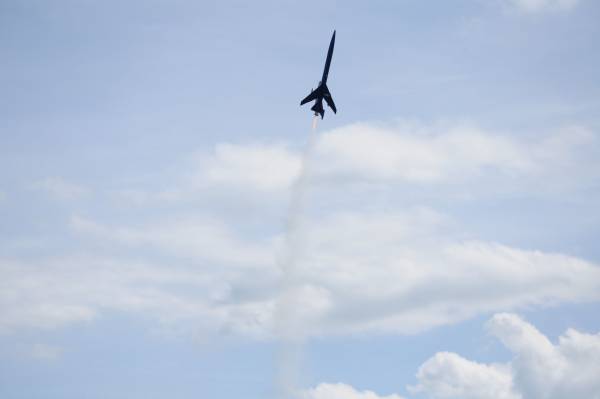
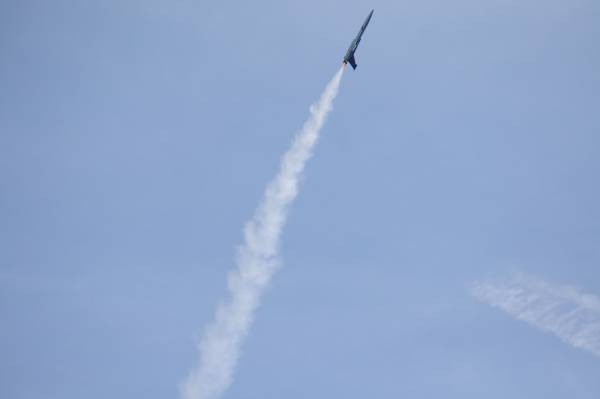
Sponsored Ads
 |
 |

